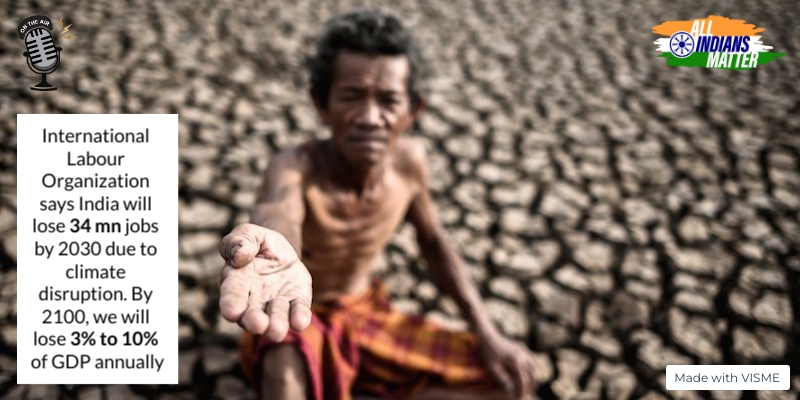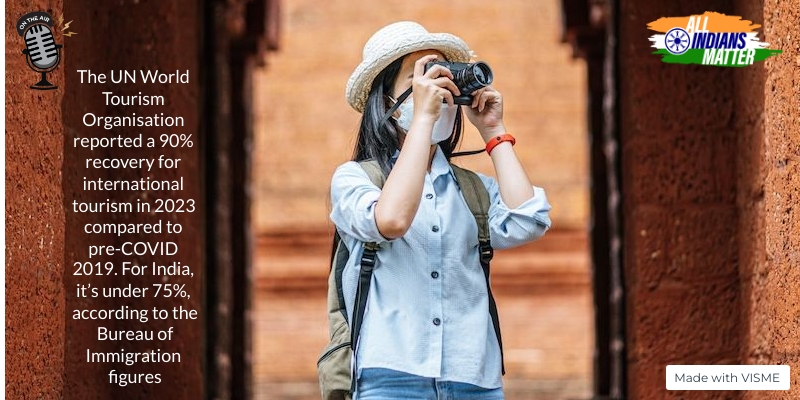Ashraf Engineer
April 21, 2023
EPISODE TRANSCRIPT
Hello and welcome to All Indians Matter. I am Ashraf Engineer.
Roughly a week ago, at least 13 people who were made to sit in the open at the Maharashtra Bhushan award event in Navi Mumbai died of heat stroke. At least 50 others were admitted to hospital on a day when the mercury hit 38 degrees Celsius. It was emblematic of a brutal heatwave that is sweeping across India. Several cities received rain in March just as it was getting warmer but that rapidly segued to blistering heat. Experts say this is unusual because the heat has arrived early, cutting short the Indian spring. This has serious economic and health implications and it requires a coordinated national plan.
SIGNATURE TUNE
India’s summer months — April, May and June — are blazing hot every year but what’s different this time is that the heat has arrived early and is more intense than usual. This has become somewhat of a pattern over the past decade and has claimed hundreds of lives.
The summer arrived early last year and it’s arrived even earlier this year. Scientists say most of India skipped spring altogether and this could mean worse times ahead.
So, what is a heatwave? According to the met department, it’s when the temperature is at least 4.5 degrees Celsius higher than the average. India suffered one of its worst heatwaves in 2015, when more than 2,000 people died and hundreds more were hospitalised. This year, the met says, the heatwave will hit most parts of central, east and northwest India, with maximum temperatures in central and north peninsular India ranging between 40 and 42 degrees Celsius.
At particular risk are those who work in the open, such as hawkers, street food sellers and construction labourers.
Look at the weather pattern. This February was India’s hottest since record-keeping began in 1901. It was only the rain in March that pulled temperatures back. But this was unseasonal rain and North India is now looking at a record-breaking summer. Climate change is real.
What are some of the factors at play? There is severe disruption in heat dissipation. Experts say 55% of India’s landscape is disrupted, with ecosystems like ponds, wetlands and jungles under attack.
This climate disruption has serious economic implications. The International Labour Organization says India will lose 34 million jobs by 2030. By 2100, we will lose 3% to 10% of GDP annually. The heatwaves will throw in turmoil the lives of those in high-risk areas. This will span employment, crop production and health.
The impact on human health is significant. Heat exhaustion and heatstroke are getting more common and heatwaves can worsen existing health problems, such as heart disease. The healthcare costs are significant, especially for the poor.
Water resources, meanwhile, are shrinking, leading to crop failure and farm incomes depleting. Don’t forget, 40% of the population is dependent on agriculture. Punjab and parts of Uttar Pradesh have reported that the heatwave has affected the wheat crop and output could fall by as much as 20%.
Rising temperatures intensify air pollution indirectly too. As it gets hotter, we use more air-conditioning, increasing power consumption. In India, electricity is generated mainly by burning coal. So, as consumption increases, so does air pollution.
Experts say a national action plan is required, starting with a mapping of the areas likely to be worst affected. This should be followed by fixing the ecological disruptions by rejuvenating ponds, stopping deforestation and lowering emissions.
Limiting carbon emissions is the foundation of it all. At 2.7 billion tons a year, India is among the world’s top emitters.
Public awareness is the key too. Citizens must understand the impact of heatwaves on their health, the environment and the economy. This can be achieved through public campaigns and suitable inclusions in school syllabi.
There is no alternative to renewable energy and India has progressed on this front. As the next step, the government should incentivise the adoption of solar panels, which would also create jobs.
India needs to manage its water better and, for this, we need investment in efficient irrigation systems, rainwater harvesting and recycling.
Lastly, our infrastructure needs to be temperature-proof. We need better and sustainable cooling systems, for instance, as well as roads that can withstand extreme temperature fluctuations.
The heatwave must be addressed urgently. As I’ve pointed out, the impact on health and the economy are massive. The long-term solution, of course, is sustainability in all walks of life but, for the moment, a national plan to deal with the crisis is badly needed.
Thank you all for listening. Please visit allindiansmatter.in for more columns and audio podcasts. You can follow me on Twitter at @AshrafEngineer and @AllIndiansCount. Search for the All Indians Matter page on Facebook. On Instagram, the handle is @AllIndiansMatter. Email me at editor@allindiansmatter.in. Catch you again soon.






